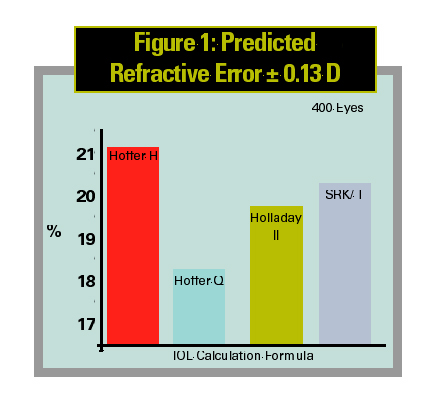The "H" in the formula's name stands for Holladay, since it's a modification of the formula first presented by Dr. Jack Holladay at the "Advanced IOL Calculation" course at the meeting of the American Society of Cataract and Refractive Surgery in Seattle in 1996.
Dr. Hoffer spent years amassing careful clinical measurements of the anatomy of patients' eyes to develop updated normal values to use in place of the values used in the Holladay II formula, in the hope that it would make an already accurate formula even more so. Specifically, he honed the values for axial length, keratometry, corneal diameter and anterior segment length (the distance from the front of the cornea to the back of the lens).
"[The new normals] are real, true measurements of thousands of eyes that I measured precisely," Dr. Hoffer says. "That's what I'm most proud of. That's why I was hoping those measurements would be really true, and this would really be a home run. I thought if I could put together the right data, I could tweak this thing and make it look fantastic."
Though he doesn't think he hit a home run with it, he says he also doesn't think he struck out either.
The good points: After using the formula on 400 eyes, Dr. Hoffer found that the mean absolute error (MAE) of the formula was best in short eyes with axial lengths less than 22 mm (5 percent of the patients) and in medium-long eyes between 24.5 and 26 mm (17 percent of the patients). Also, 21 percent of the patients were within 0.13 D of the predicted refractive error postop (See Figure 1), and 64 percent were within 0.5 D, values that were better than the other formulas.
|
|




